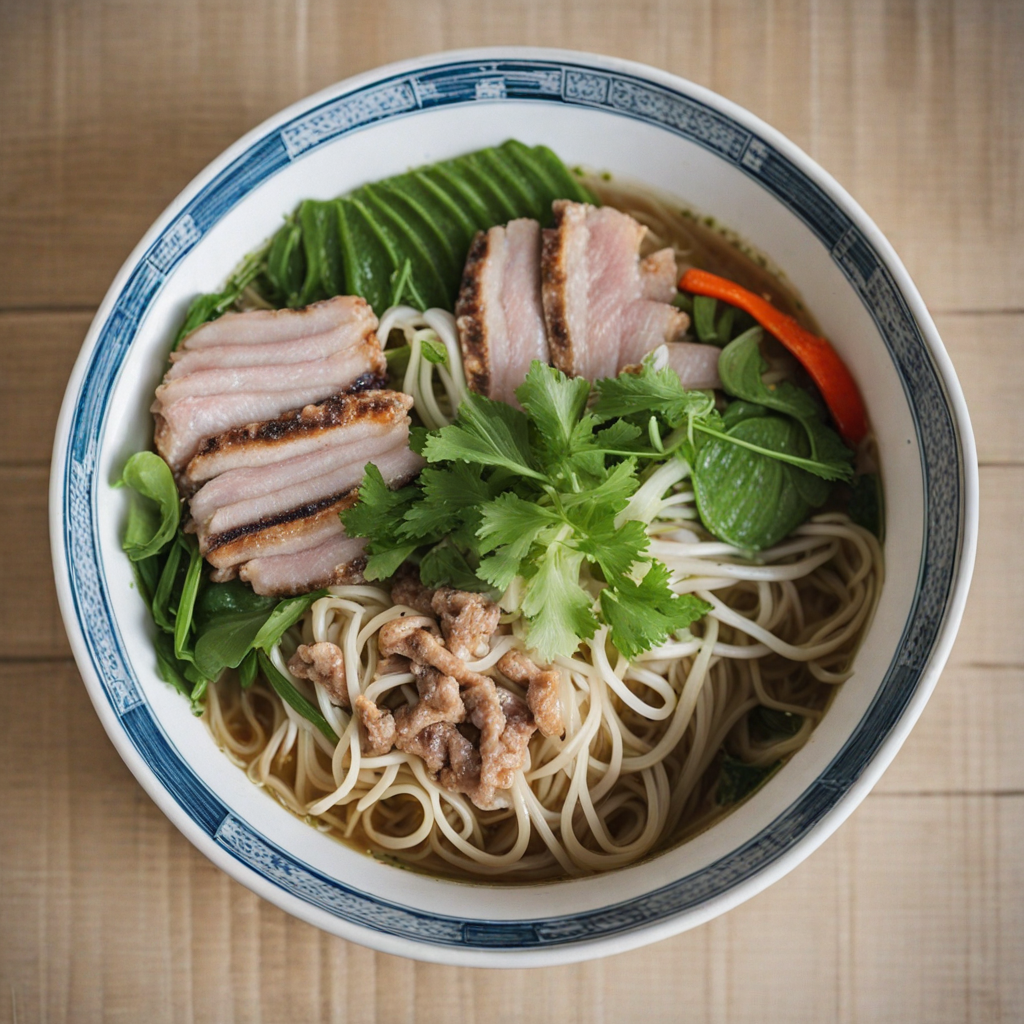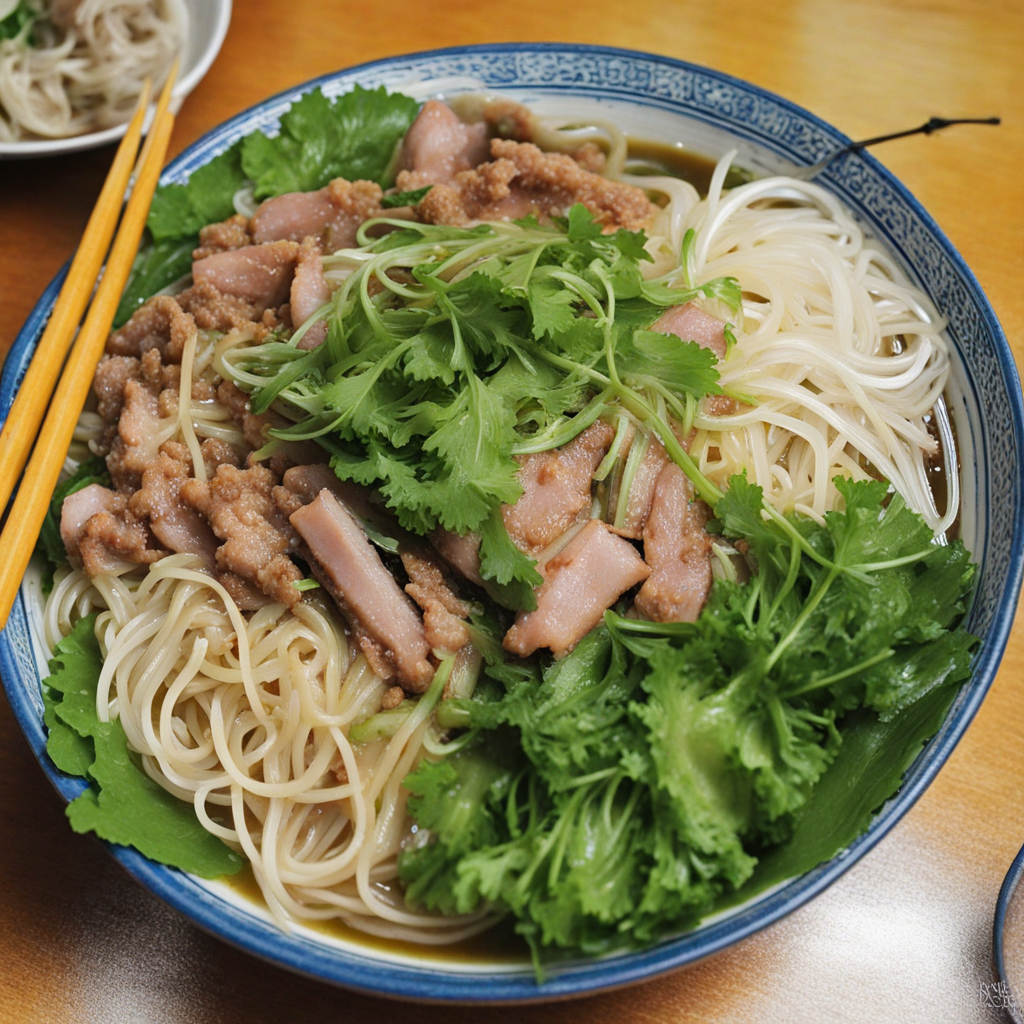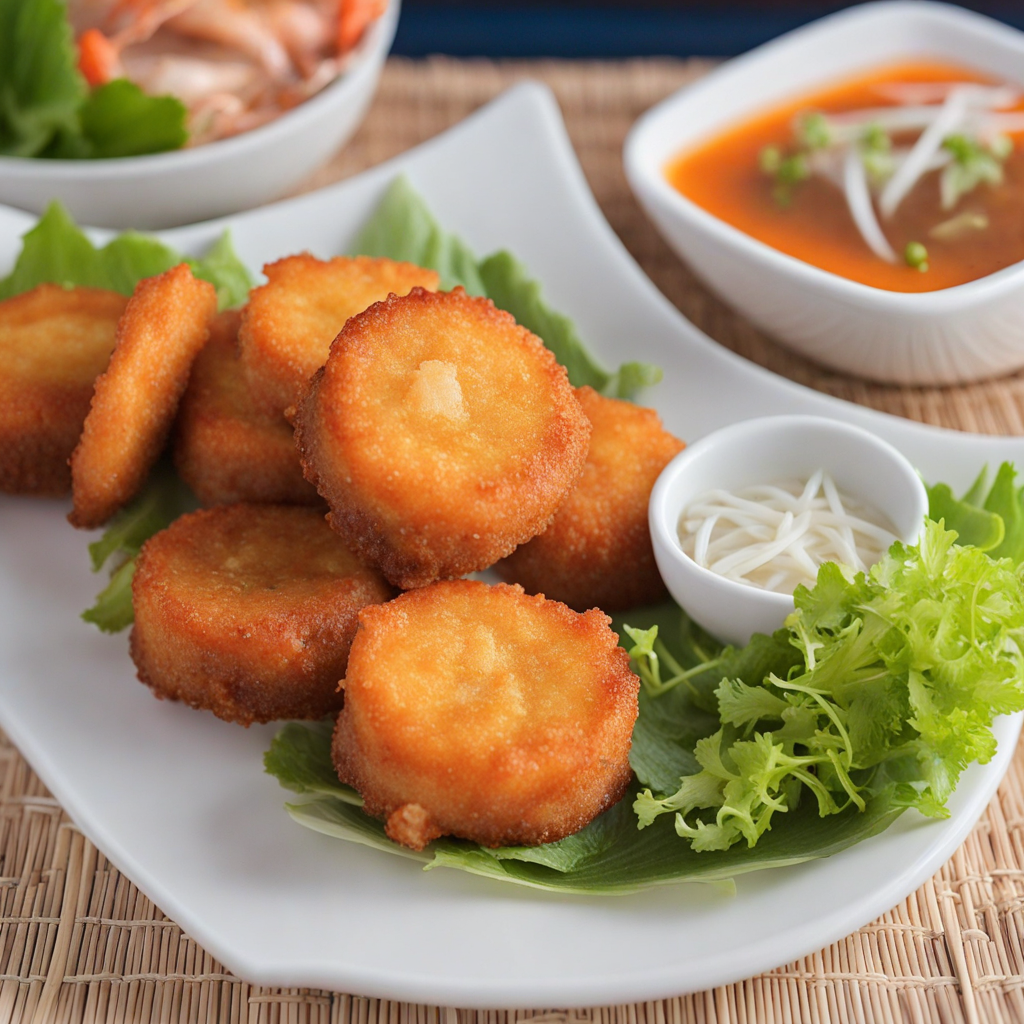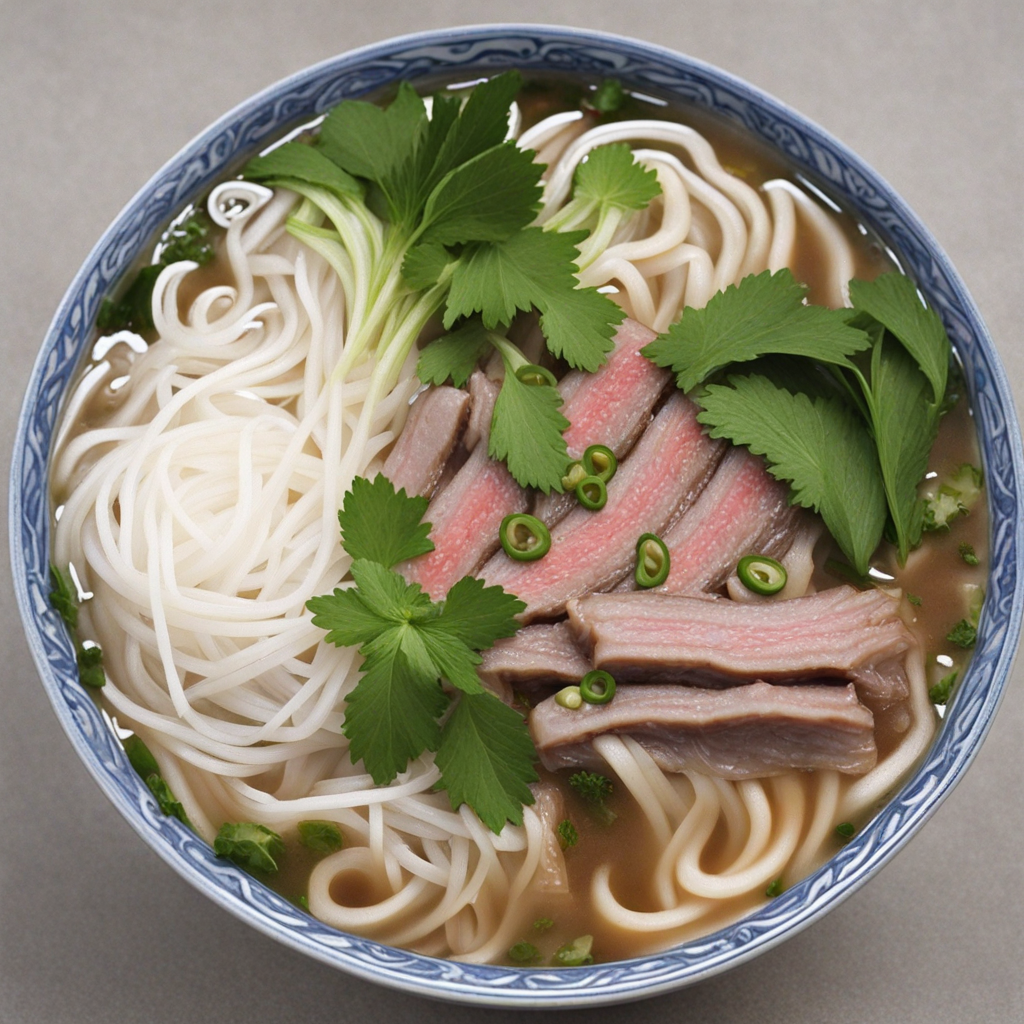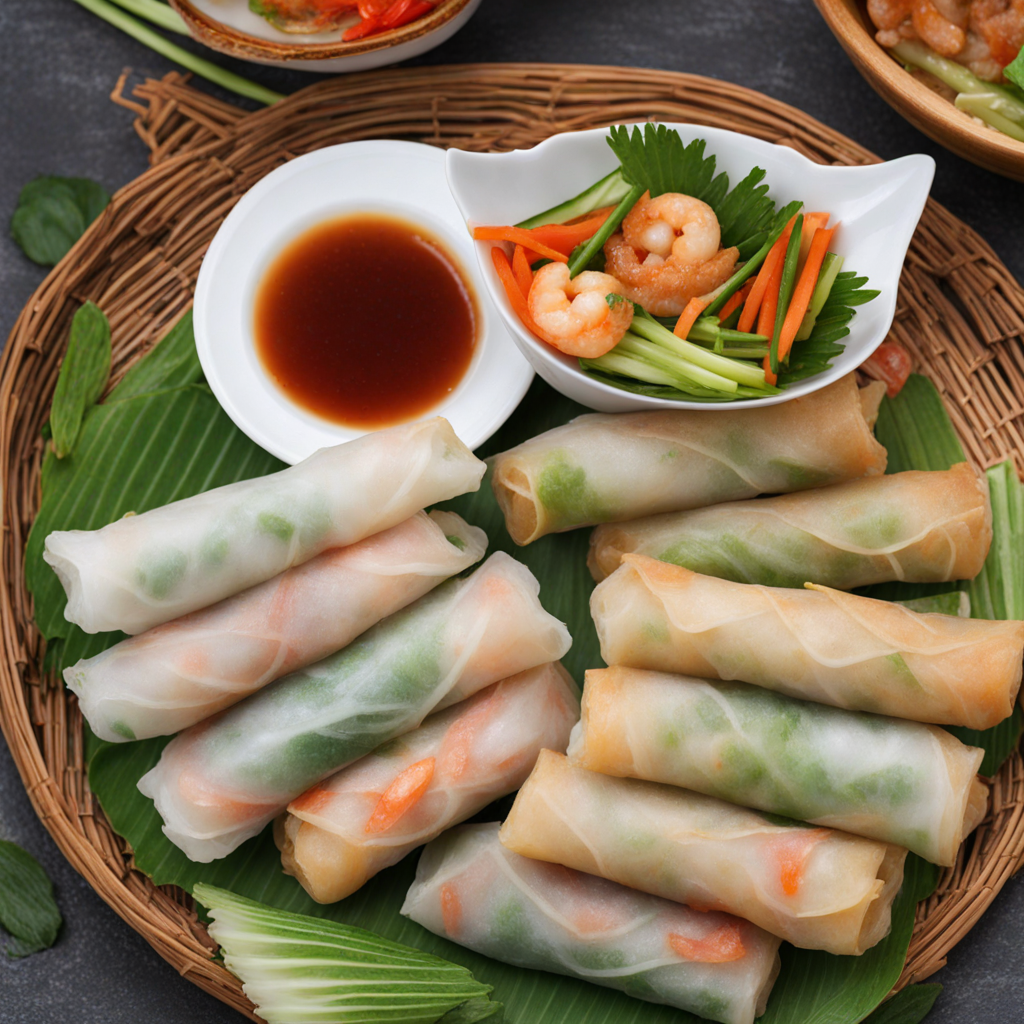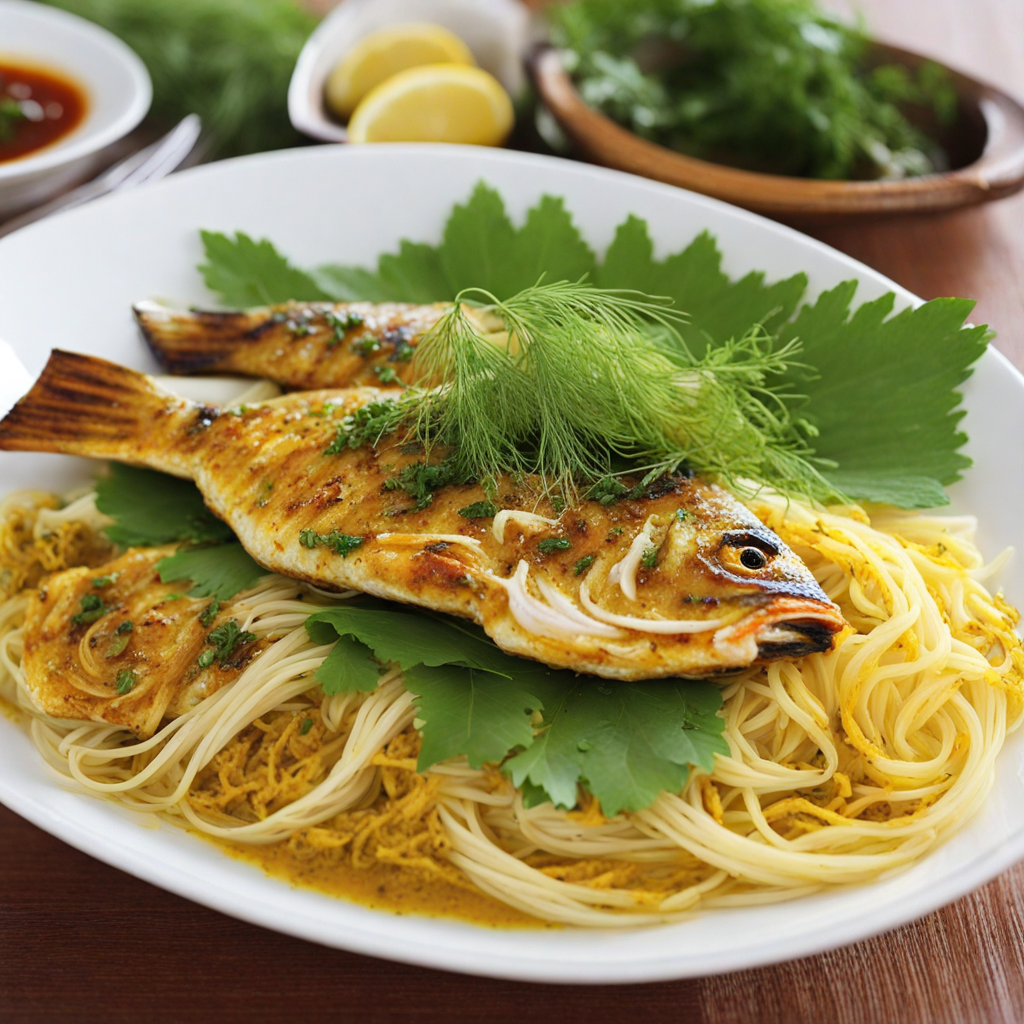Cao Lau
Cao Lau is a unique and flavorful dish hailing from the ancient town of Hoi An in Vietnam. This regional specialty is characterized by its thick, chewy rice noodles, which are distinctively made using water drawn from a specific well in Hoi An, giving them a unique texture and taste. The noodles are typically tossed with succulent slices of marinated pork, which are often grilled or braised, infusing the dish with a rich, smoky flavor that complements the noodles beautifully. A sprinkle of fresh herbs and a handful of crisp bean sprouts add a refreshing crunch, enhancing the overall experience of this delightful dish. What sets Cao Lau apart from other Vietnamese noodle dishes is its savory broth, which is not a soup but rather a limited amount of broth that lightly coats the noodles. This broth is made with a combination of spices, soy sauce, and sometimes a hint of the region's famous fish sauce, creating a depth of flavor that is both savory and slightly sweet. The balance of flavors is integral to the experience, making each bite a harmonious blend of textures and tastes that tantalize the palate. To finish off this culinary masterpiece, Cao Lau is often garnished with crispy pork cracklings and fresh herbs like cilantro and mint, which bring a burst of freshness to each mouthful. Served with lime wedges on the side, diners can enhance their dish with a squeeze of citrus, which brightens the flavors even more. With its rich history and distinctive preparation, Cao Lau is not just a meal; it's a taste of Hoi An's culture, inviting food lovers to indulge in a truly authentic Vietnamese experience.
How It Became This Dish
The Culinary Journey of Cao Lầu: A Vietnamese Treasure #### Origins and Historical Context Cao Lầu, a unique dish hailing from the ancient town of Hội An in Central Vietnam, embodies the region's rich tapestry of history, culture, and culinary innovation. The dish consists of thick rice noodles, savory pork, fresh herbs, and a hint of broth, all elegantly presented with a sprinkle of crispy rice crackers. Its origin, however, is as layered as the dish itself, reflecting centuries of trade, migration, and cultural exchange. The etymology of the name "Cao Lầu" can be traced back to the Chinese influence on the region. "Cao" means "high," and "Lầu" refers to "floor" or "level," indicating a connection to the elevated cooking techniques that define this dish. Some scholars suggest that it is derived from the Chinese noodle dish "làu," which further highlights the intricate relationship between Vietnamese and Chinese culinary practices. Cao Lầu's roots can be linked to the Cham civilization, which once thrived in central Vietnam. The Chams, known for their trade networks, interacted extensively with Chinese, Indian, and Malay merchants. This cross-cultural exchange introduced various spices and cooking techniques, shaping the local cuisine. However, it was during the 15th century, when Hội An flourished as a bustling trading port, that Cao Lầu began to take form. The influx of foreign traders brought new ingredients and culinary methods, leading to the dish’s unique combination of flavors and textures. #### Cultural Significance Cao Lầu is not merely a dish; it encapsulates the essence of Hội An's identity. The town has been recognized as a UNESCO World Heritage site due to its well-preserved architecture and its historical significance as a trading hub. The dish serves as a culinary symbol of this rich heritage, showcasing the harmonious blend of indigenous and foreign influences. In Hội An, Cao Lầu is more than just a meal; it is a social experience. It is often served in small family-run eateries, where locals and tourists alike gather to savor its distinct taste. The act of eating Cao Lầu is intertwined with community, sharing stories, and celebrating togetherness. The dish's preparation is a labor of love, typically passed down through generations, preserving traditional techniques while adapting to contemporary tastes. The ingredients used in Cao Lầu are also significant. The rice noodles, known for their chewy texture, are made from rice soaked in the ash of the local trees. This unique method imparts a subtle flavor and a distinctive color to the noodles. The pork, usually marinated and grilled, adds a rich, savory element that complements the freshness of the herbs. The dish is often garnished with fresh basil, mint, and bean sprouts, highlighting the importance of balance and freshness in Vietnamese cuisine. #### The Development Over Time As with many traditional dishes, Cao Lầu has evolved over time while retaining its core identity. In the early 20th century, as the Vietnamese economy underwent significant changes, so did its culinary landscape. The rise of tourism in Hội An played a crucial role in the popularization of Cao Lầu beyond its local roots. Visitors from around the world were drawn to the town's charm and its culinary offerings, including Cao Lầu. This exposure led to a growing interest in the dish, prompting local chefs to experiment with new ingredients and presentation styles. The late 20th century heralded a new era for Cao Lầu, as Vietnam began to open up to globalization. With the influx of international influences, chefs began to adapt traditional recipes to cater to diverse palates. While the authenticity of the dish remained a priority for many, variations began to emerge, incorporating elements from other cuisines. Some restaurants started offering vegetarian versions, using tofu as a substitute for pork, while others experimented with different types of broths or sauces, reflecting the evolving tastes of a global audience. Despite these adaptations, the essence of Cao Lầu has been preserved. Many chefs continue to emphasize the importance of using high-quality local ingredients, staying true to the dish's origins. The rice noodles are still made using traditional methods, often sourced from local producers who follow age-old practices. The emphasis on freshness, flavor, and balance remains central to the preparation of Cao Lầu, ensuring that it continues to be a beloved dish for both locals and visitors. #### Cao Lầu in Contemporary Context Today, Cao Lầu stands as a testament to Vietnam’s rich culinary heritage and the resilience of its traditions. As global interest in Vietnamese cuisine grows, Cao Lầu has gained recognition on international culinary stages, often featured in food festivals and culinary competitions. Chefs around the world have embraced the dish, interpreting it through their own culinary lenses while honoring its traditional roots. The rise of food tourism has also played a vital role in promoting Cao Lầu. Culinary tours in Hội An often include visits to local eateries, where tourists can witness the preparation of the dish and learn about its history. This hands-on experience allows visitors to engage with the culture and heritage of the region, fostering a deeper appreciation for Vietnamese cuisine. Moreover, social media has become a powerful tool in showcasing Cao Lầu to a broader audience. Pictures of the dish, with its vibrant colors and artistic presentation, flood platforms like Instagram, enticing food lovers worldwide. This visibility not only promotes the dish but also contributes to the preservation of its cultural significance, as more people seek to understand the stories behind the food they consume. #### Conclusion Cao Lầu is more than just a delicious dish; it is a celebration of history, culture, and community. Its origins reflect the complex interplay of local and foreign influences that have shaped the culinary landscape of Vietnam. As it continues to evolve in contemporary times, Cao Lầu remains a cherished emblem of Hội An, connecting generations through its preparation and enjoyment. In every bowl, one can taste the stories of the past, the richness of tradition, and the promise of the future. Whether enjoyed in a bustling eatery in Hội An or a gourmet restaurant abroad, Cao Lầu captures the heart and soul of Vietnamese cuisine, inviting all to savor its unique flavors and the heritage it represents.
You may like
Discover local flavors from Vietnam


